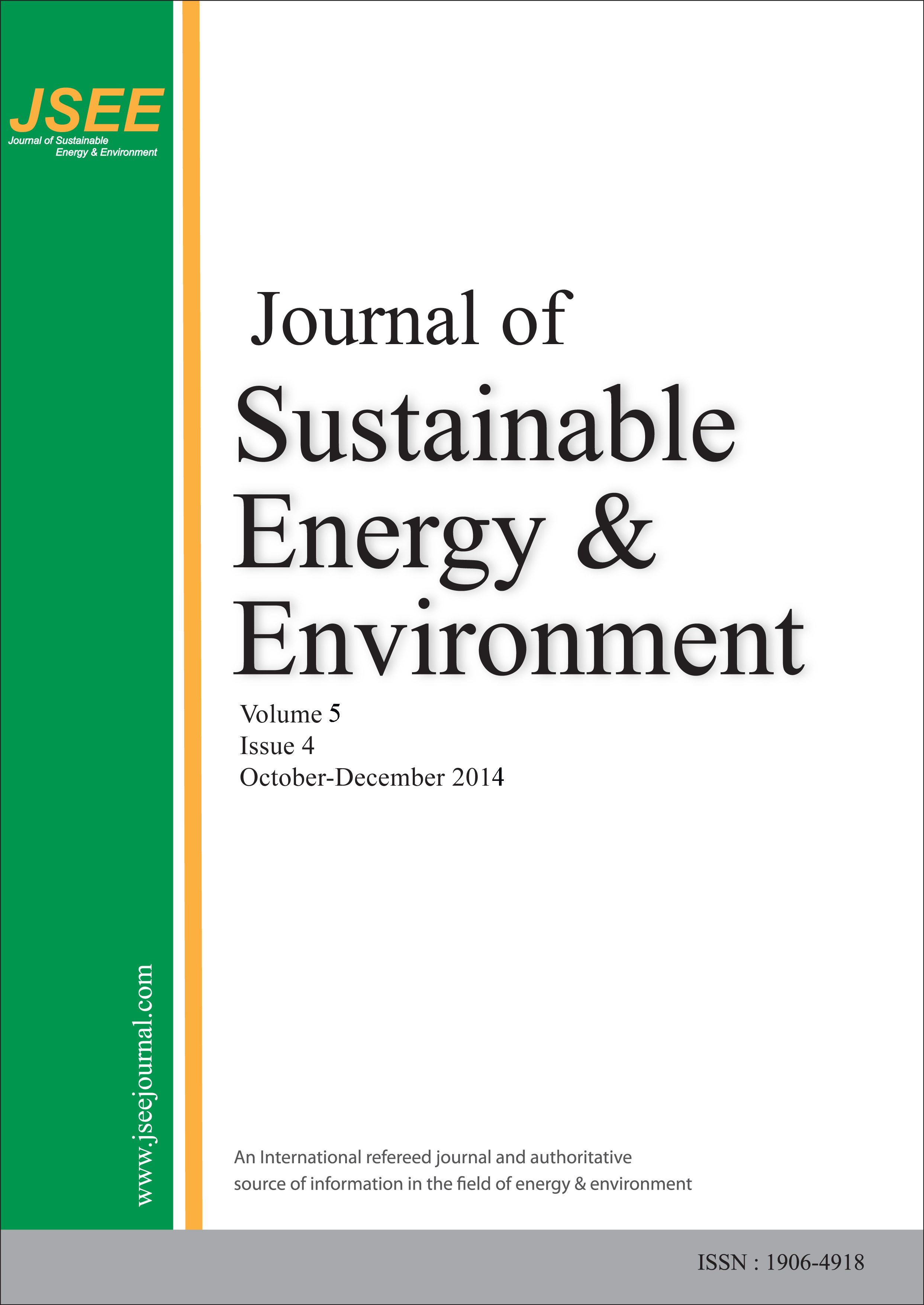
Mark Hindelang, Shabbir H. Gheewala*,Rattanawan Mungkung and Sébastien Bonnet
Abstract: This study evaluates an Aquaponics system operated in Bangkok, Thailand for the duration of 15 months from a life cycle assessment perspective. The scoped boundaries include system infrastructure, energy usage, water usage, fish feed, and sludge discharge from water filtration. The functional unit of this analysis was the composite of fish (65 kg), vegetable production (323 kg) and sludge discharge (252 kg) for 15 months.The sustainability of this urban aquaponics system is highly influenced by the resulting life of the infrastructure, crop selection and scalability. The revenue values of the vegetables always exceed the fish because the aquaculture stocking density is a bound ratio to the vegetable harvest. In a stable continuous operating system of tilapia and vegetables, the system will on average produce approximately 1:5 (65 kg:323 kg) by weight ratio. Because the fish excrete the composition of matter that becomes the nutrients for the vegetables and the vegetables are in fact the uptake mechanism resulting in the water’s filtration, the two components cannot be scaled independently.The results of the study indicated total system impacts to be: Global Warming Potential 881 kg CO2-eq, Acidification 4.67 kg SO2-eq, Fresh Water Eutrophication 0.01 kg P-eq, and Marine Water Eutrophication 4.18 kg N-eq. The case indicated feed and electrical provisions to be the highest contributor to environmental impacts. While the results varied based on the method of allocation applied to the final results, the comparisons with other LCA studies producing fish showed Aquaponics to have lesser environmental impacts due to the added benefit of extra vegetable food production.Keywords: Aquaponics, Aquaculture, Recirculating, Life Cycle Assessment, Sustainability.

Pinchookorn Chobthiangtham, Suneerat Fukuda* and Pornpote Piumsomboon
Abstract: The computational fluid dynamic codes of Euler-Euler approach with KTGF were used to develop three-dimensional simulation models to explain the hydrodynamic behaviors of a bubbling fluidized bed gasifier (BFBG). The input parameters and optional model used for the simulation were studied and validated under cold flow (ambient temperature and non-reactive) condition with the experimental results of a downscale BFBG made of acrylic glass. With appropriate input parameters and models, the hydrodynamic behaviors under cold flow condition inside bed zone of BFBG with non-simplified (actual configuration) and simplified air distributor model were compared. The simulation of both non-simplified and simplified air distributor model showed the occurrence of bubbles formation and motion. However, a degree of differences of hydrodynamic behaviors was found between these two models, including the rate of bubble formation and motion inside bed zone, gas-solid flow pattern, bed expansion ratio, and profiles of absolute pressure along the height of bed zone.Keywords: Computational Fluid Dynamic (CFD); Hydrodynamic Behavior; Bubbling Fluidized Bed Gasifier (BFBG); Simplified Air Distributor.

Suttikorn Chemhengcharoen, Sebastien Bonnet* and Ingo Puhl
Abstract: In Thailand, the demand for energy has been increasing sharply over the past few decades. Fossil energy contributes the largest fraction of the overall energy used to satisfy the energy demand and more than half depends on energy imports. Hence energy security is an issue of increasing concern and since 1992 the Thai government has come up with a series of successive energy efficiency policy plans and programs to tackle such a challenge. In this study, the development of energy efficiency policy in Thailand was reviewed and the challenges associated to its implementation in the industrial and building sectors investigated through a few case-studies. The review indicated that since the establishment of the ENCON in 1992, a series of energy efficiency policies and conservation and plans have been developed with a number of different organizations responsible for their development and implementation. The system appears to be quite complex overall and prone to changes. Regarding the implementation of energy efficiency and conservation measures, the investigations of the cases studies surveyed revealed that there is still a number of challenges and barriers that need to be overcome. It was found that conservation measures in designated factories and building cannot be effective unless experts from relevant energy organisations are made available to provide advice and technical support, as well as follow-up services. The successful implementation of energy efficiency policy and conservation measures depends strongly on providing such support as it appears organizations are aware and willing to participate in actions enabling to enhance the efficiency of their operations and conserve energy.